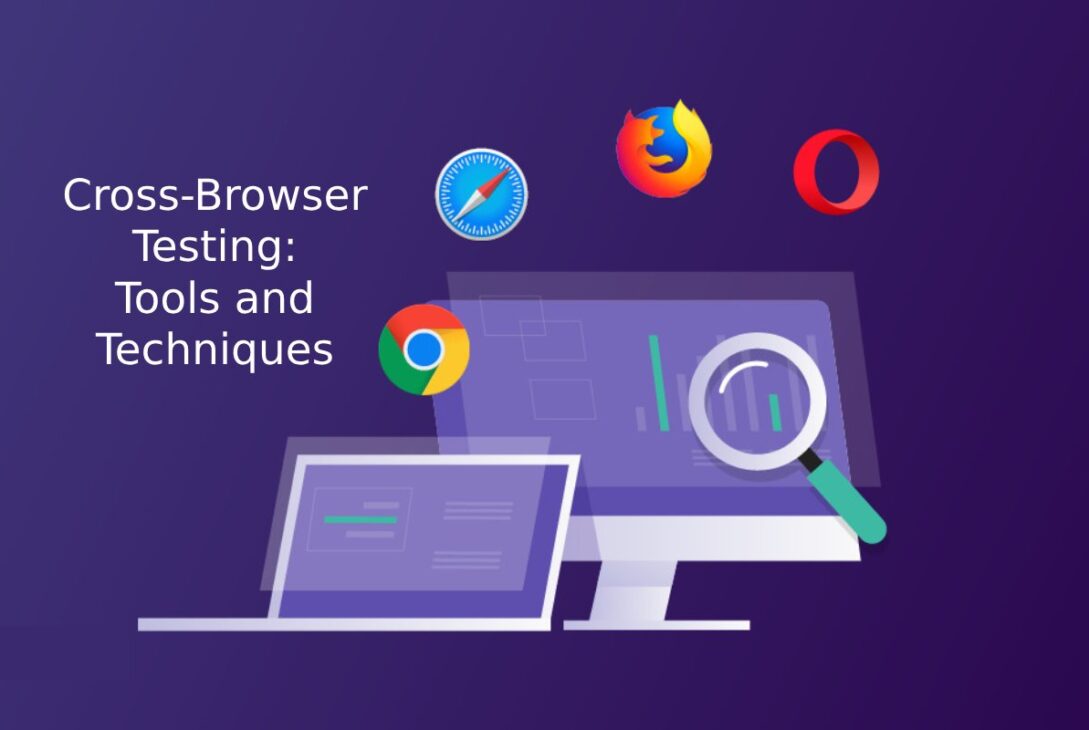Struggling to implement efficient cross-browser testing? Don’t worry! We are here for you. Our article will guide you through the importance of cross-browser testing. During this process, we’ll also discuss its major challenges, introduce popular tools, and cover advanced techniques for ensuring a flawless user experience across multiple browsers.
With so many devices present in the current market, it can be very difficult for you as a tester to guarantee the proper functioning of an application on all of these. The most efficient and time-saving process to complete this step is through cross-browser testing. Considering the variations in browsers and devices, you must overcome certain challenges for its proper implementation.
Why Cross-Browser Testing Is Essential
Before we start discussing all the tools and techniques for efficient cross-browser testing, we must have a clear idea about why should we implement cross-browser testing in the first place. Let us now divert our attention towards some of the major factors that highlight this importance:
- Users access websites from multiple browsers, devices, and operating systems. Each browser will have a unique way of rendering CSS, HTML, and JavaScript elements. Therefore various interactive features like responsive designs, animations, and even simple layouts may behave inconsistently. Cross-browser testing helps detect these inconsistencies and provide a smooth user experience all around.
- If you create a website that only functions well on one browser, you will end up alienating a major section of your end users. There were huge variations in website adoption based on geography, device type, and user preferences. Cross-browser testing is the only way to grant larger audience accessibility while preventing the potential loss of engagement.
- As the end user, you will expect your websites to be polished and functional regardless of any physical or software parameter. A poor experience caused by incompatibility will reflect a negative brand credibility. Cross-browser testing helps implement these consistencies to preserve the integrity of your brand reputation.
Challenges in Cross-Browser Testing
It is very important to have a clear idea about the challenges that you will face in cross-browser testing. This knowledge will help you to choose the right tools and techniques for tackling them. So, let us shift our attention towards some of the major challenges of cross-browser testing:
- As we already mentioned earlier, each browser has its own rendering engine with variations in multiple versions. These engines handle web standards differently, which will lead to variations in how websites are displayed and even interacted with by the end users.
- It is never enough to test your website only on the latest version of a browser. Want to know why? Our 70% of the customers never update their browser versions. But testing your web app’s performance on multiple browser versions, including legacy browsers like Internet Explorer, will become a challenging process.
- You can use almost any device even smart TVs and IoT devices to access the web. This massively ramps up the complexity of cross-browser testing. This is because a site that looks and works perfectly on a desktop platform might completely crash on its mobile counterpart. Want to know the core reason for this? Variations in aspect ratios, resolutions, and even pixel density.
- The combination of multiple browsers with operating systems and devices means that you have a huge number of variables to test. Moreover, each operating system has its own font rendering style and color differences, which further adds to the complexities of implementing cross-browser testing.
Cross-Browser Testing Techniques
While performing cross-browser testing, you have to implement the correct steps to ensure that you are utilizing the full potential of this process. When it comes to the primary process, you can either perform manual cross-browser testing or automated cross-browser testing. To further shed light over this, let us explain these two processes in detail:
Manual Cross-Browser Testing
Manual cross-browser testing will consist of you manually verifying the functioning of your web application on different devices and browsers. This approach is suited for smaller projects.
This process also becomes relevant when you are verifying the functioning of certain UI elements that are almost impossible to automate. These elements can include interactions, a visual design, or the overall accessibility.
Want to implement manual cross-browser testing? Simply follow the steps that you have mentioned below:
- Begin this process by testing across multiple popular browsers like Google Chrome, Mozilla Firefox, and Apple Safari.
- After this, you must verify the responsiveness of your web design by resizing the browser window on multiple devices.
- Move on to testing specific user journeys on each browser that you have chosen. Some of the most important journeys that require thorough testing include filling out forms, navigating through pages, and checking interactions like pop-ups or modals.
- The final step in this process is to have a close watch towards the rendering differences. These differences will mainly arise in elements such as font sizes, layout shifts, and any interactive element like transitions or animations.
Automated Cross-Browser Testing
On the other hand, automated cross-browser testing is one of the most important elements for larger web development projects or even implementing a continuous integration pipeline.
This process mainly consists of writing the automation test scripts, which will be later executed across multiple browsers. The system will use all the parameters mentioned in these scripts for running the test scripts and verifying the functioning of the web application.
When it comes to choosing your preferred automation test scripts, you have various options like Selenium and Appium. You can also combine these automation testing frameworks with cloud-based platforms like LambdaTest to run these test scripts across multiple device and browser combinations.
Want to implement automated cross-browser testing? Simply follow the steps that we have given below:
- Begin the process by defining the key user flows that you want to test. These user flows can include login processes, navigations, or form submissions.
- Now, you have to move on to writing the automation test script using any of your chosen framework like Selenium.
- The next step in this process is to integrate the automation test scripts into the continuous integration and continuous deployment pipelines. This approach will help you to run the test automatically whenever the system sees any change in the core framework or the code base of the application.
- The final step in this process is to integrate your chosen cloud-based services to run these tests across multiple browsers and devices at the same time using parallel test execution.
We will say that you must remember that neither manual testing nor automation testing is superior to each other. Both of these processes are equally powerful based on your requirements. So, the most ideal approach is to have the perfect balance between these two.
Popular Cross-Browser Testing Tools
Based on our understanding and thorough market research, we have created a list of some of the most efficient cross-browser testing tools that are currently available. While creating this list, we have tried to incorporate all possible use cases and projects needs:
Selenium
Who isn’t familiar with Selenium? It is possibly one of the longest standing options for implementing automated web app testing. Instead of being a standalone framework, Selenium is a test suite that comes with individual tools to assist you at different stages of the application testing process.
Selenium allows you to write the automation test scripts in any of your preferred programming languages to eliminate the hassle of going through the learning curve of a new language for just one tool. Using the Selenium Grid, the testers can run the test cases across multiple browsers and operating systems in a parallel configuration.
Appium
Appium isn’t a novice in this segment either. It is probably the most popular option when it comes to automated mobile app testing. Its capabilities start from native mobile apps and goes all the way to hybrid applications.
The most intuitive feature of this tool is that it offers a single API to run the test scripts on multiple mobile platforms like iOS, Android, and Windows. This unified API also allows the application testers to run the test cases on multiple mobile configurations at the same time.
LambdaTest
LambdaTest is an AI-powered test orchestration and execution platform that lets you perform manual and automation testing at scale with over 3000 real devices, browsers, and OS combinations. This platform also improves browser compatibility testing by also including legacy browsers like Internet Explorer and outdated devices.
A very unique feature of LambdaTest is that it will create a comprehensive test report after completing all the test scripts. This report will provide you with vital screenshots and videos about the faulty elements. Using this information, you can easily go to the required element and perform the resolving steps.
Best Practices for Cross-Browser Testing
Finally, we strongly advise the testers to implement the following best practices to further improve the quality and productivity of their cross-browser testing environment:
- It is very important to use analytics data to find which browsers and devices are most commonly used by your target audience. Based on this data, you must focus your testing efforts on these browsers to have the maximum impact.
- It is important to add cross-browser testing into the development process as early as possible. This inclusion will help fight issues before they are difficult to fix.
- Modern browsers are regularly updated to add new features or remove the clunky ones. These updates can massively impact the functioning of your website so you must monitor these updates and ensure that your testing plan includes new browser versions.
- Finally, you must choose cloud-based platforms like LambdaTest for quick and efficient testing across a huge range of browsers, devices, and operating systems. These platforms will also eliminate the hassle and expense of maintaining an in-house device testing environment.
The Final Verdict
Keeping in mind all our main areas of discussion in this article, we can safely say that cross-browser testing is a very important part of the web development process. It helps to make sure that your users get the same capturing experience that does now bother with the browser or device that they are using.
By using the right tools and techniques while implementing the correct best practices, the developers can overcome the challenges of browser diversity, find and replace bugs early, and ensure that the website reaches its widest possible audience.
A successful cross-browser testing strategy will help combine both automated and manual approaches, prioritize key browsers based on analytics, and integrate with continuous testing workflows. By implementing all these factors, you can also create a high-quality application which will have a key role in elevating your company’s reputation.



